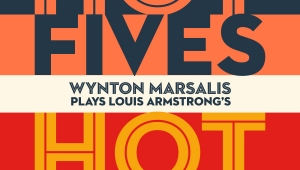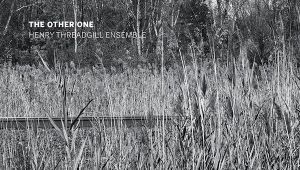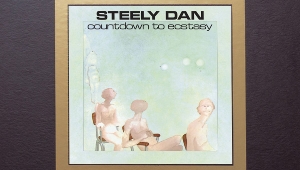| Columns Retired Columns & Blogs |
Recording of January 2002: J.S. Bach: Morimur
J.S. BACH: Morimur
Partita No.2 in d for Solo Violin, BWV 1004; 11 Chorales; Chaconne from BWV 1004 and "Auf meinen lieben Gott" realized by Helga Thoene for solo violin & four voices
Christoph Poppen, baroque violin. The Hilliard Ensemble: Monika Mauch, soprano; David James, countertenor; John Potter, tenor; Gordon Jones, baritone
ECM New Series 1765 (CD). 2001. Manfred Eicher, prod.; Peter Laenger, eng. DDD. TT: 61:42
Performance *****
Sonics *****
"Morimur" is Latin for "we die," from "In Christo morimur" (We die in Christ), the central phrase of an old Latin saying: "We are born from God / We die in Christ / We are reborn through the Holy Spirit." Thoene understands the Chaconne to be an epitaph for Bach's first wife, Maria Barbara, whose sudden death in 1720 just preceded his composition of the Partita. Each chorale supposedly quoted in the Chaconne treats death as its subject.
Partita No.2 in d for Solo Violin, BWV 1004; 11 Chorales; Chaconne from BWV 1004 and "Auf meinen lieben Gott" realized by Helga Thoene for solo violin & four voices
Christoph Poppen, baroque violin. The Hilliard Ensemble: Monika Mauch, soprano; David James, countertenor; John Potter, tenor; Gordon Jones, baritone
ECM New Series 1765 (CD). 2001. Manfred Eicher, prod.; Peter Laenger, eng. DDD. TT: 61:42
Performance *****
Sonics *****
In 1994, Bach scholar Helga Thoene published a paper arguing that a number of the chorales Bach had written for his more than 200 surviving cantatas were quoted or alluded to or implied in the long, famous Chaconne of his Partita No.2 in d for Solo Violin, BWV 1004. Fascinated by this, baroque violinist Christoph Poppen, a baroque violinist and artistic director of the Munich Chamber Orchestra, suggested to ECM founder-producer Manfred Eicher that they record an arrangement by Thoene of the Chaconne, for solo violin and four voices, that would incorporate and thus reveal for the musical record those encrypted chorales. Eicher agreed, Thoene "realized" an arrangement, and the result is Morimur.
 | |
The disc contains: Partita No.2 in full, as Bach wrote it for solo violin; the Hilliard Ensemble singing the various chorales that, according to Thoene, are harmonically and thematically encrypted and revealed in the work and were thus "in Bach's mind" as he composed the Partita, including "Den Tod niemand zwingen kunnt"; three brief fragments of "Den Tod" used as links; an arrangement of the chorale "Auf meinen lieben Gott" for violin and four voices; and Morimur's centerpiece, a second performance of the 14-minute Chaconne from the Partita, in Thoene's arrangement with voices added. The five movements of the original Partita alternate with the unaccompanied Hilliards singing chorales, whole or in fragments, followed by eight more chorales, followed by the re-envisioned Chaconne.
All of this is fascinating, but Thoene's daunting mathematical and musical scholarship, as revealed by her and Herbert Glossner's essays in Morimur's sumptuous 80-page booklet, are simply over my head—like me, any less-than-world-class Bach aficionado must simply take her word for it. Or not—certainly one could argue that, in the rigorously formulaic world of late baroque music, the chances of overlaying the armatures of different but similar works and then "discovering" harmonic and contrapuntal consonances is far more likely than in the late romantic or even the late classical era.
What no one need take anyone's word for is whether or not the result is anything more than a sophisticated musicological exercise—that is, whether or not Thoene's realizations are musically significant. I think they are not. I listened to the disc straight through several times, then to the Partita in its original version, then to all of the chorales, then to Thoene's realizations of "Auf meinen lieben Gott" and the Chaconne, followed immediately by that chorale and the Chaconne as Bach wrote them. (One of Morimur's many attractions is its seemingly infinite possibilities for creatively programming one's CD player.)
What struck me was how cluttered, how needlessly busy and overwritten Thoene's versions are. As she points out, an essential element of Bach's works for solo violin and cello, and particularly those for violin, is the astonishingly creative tension he builds by implying harmonies, other voices, bass lines, counterpoint—even fugues—that are barely hinted at on the page. This quality, of course, is what attracted Thoene to her task, and makes this music profound in the first place. But making the implicit explicit destroys most of the tension, the deeply serious fun, of such a work. Having all of those implied harmonies actually voiced, however consummately, renders redundant a good deal of Bach's writing for the violin—and redundancy of harmony and counterpoint were two sins of which Bach was seldom, if ever, guilty. It is Bach's very elegance in this sphere—that is, his creation of maximal musical meaning from minimal musical means—for which we most value his work.
"This recording turns the piece into a work literally never heard before," says Glossner. This statement's self-evidence aside, there's a very good reason for this, one that Morimur makes definitively clear: Bach did not write the chorale parts explicitly into the Chaconne because the implications he did write are clear enough. Whether or not the grieving Bach intended, consciously or unconsciously, to draw the listener's attention to the various "death" chorales identified by Thoene, is beside the point. That we "know" that a certain passage in the Chaconne refers to, say, "Christ lag in Todesbanden" is unimportant. What is important is that both works found their source in the depths of Bach's human capacity for grief—a capacity that, unlike his singular ability to express it in art, is shared by all humanity. However well and seriously intended, and as fascinating as they are, Thoene's exercises are not art, but musical footnotes that smother and obscure the text they were intended to support. I'm sure Thoene, Poppen, the Hilliards, and Eicher would be the first to agree.
All that aside, Morimur contains more than enough profound art and music to qualify it for "Recording of the Month," even "Recording of the Year." The Hilliard Ensemble is its usual perfect, impeccable self. It took me exactly two seconds to get used to hearing these well-known chorales performed by only four singers in a nonstandard complement of soprano, countertenor, tenor, and baritone. Newcomer Monika Mauch blends effortlessly with the three men, and the quartet's control of entrance, attack, dynamics, and general interpretation seem almost suprahuman. I doubt if these chorales have ever been sung with greater artistry, poise, or a more perfectly placed reverence.
But my primary reason for returning again and again to Morimur is Christoph Poppen. The sounds of the baroque violin—and of the baroque performance style, which eschews most vibrato—are, of course, far more dry and astringent than their modern counterparts. Within those constraints, Poppen's musicality dwarfs many of the other "classic" interpretations of this Partita—for instance, Henryk Szerynk's distant, Apollonian classicism, and Ruggiero Ricci's slashing, edgy ferocity.
Of recordings I'm familiar with, Poppen's is matched only by Itzhak Perlman's, with striking differences. The two are technical equals, but Perlman's huge sound (emphasized by EMI's close miking) and deep warmth of tone and feeling are perfectly counterpoised by Poppen's somewhat more considered and less passionate, but no less feelingful, intelligence (as well as by ECM's greater use of hall sound). It's the difference between, respectively, the profoundly soulful and the profoundly spiritual.
Ultimately, I prefer Poppen; his control of dynamics is sometimes difficult to believe—at one point in the Chaconne he builds a steady crescendo over more than two minutes, an eternity for a soloist—and his playing is the most "vertical" I have ever heard in the Partita. Phrase after phrase, time seems to stop, each note fully experienced by the player (and hence by the listener) as Bach's vistas of alternate harmonies and rhythms and counterpoint branch off endlessly at right angles to the forward thrust of the written notes. At times, the very DNA of music itself seems to unfold from Poppen's hands and instrument. This seems to happen only with Bach, and most often with the Sonatas and Partitas—but never more profoundly as on this recording.
What the release of Morimur demands is, now, a complete cycle from Poppen of all of Bach's Solo Sonatas and Partitas. I hope that cycle is recorded by ECM. The sound here is that label's usual masterful blend of authenticity and artifice. The venue was the chapel of the Monastery of St. Gerold, in Austria, and the sense of a large, distinct space unfolding from the speakers is utterly convincing. The only problems—again, in Thoene's realizations for voices and violin—were not, as far as I could tell, the recordists' fault. Rather, an acoustic perfect for voices or violin alone was simply too richly resonant, too "wet," to support voices and violin in these versions without muddying the sound. But the mud, I think, is in Thoene's versions of the music, not in the sound itself.
Morimur is a remarkable achievement, and no less so for the basic unsoundness of its central project—its failures take place on a level other recordings and musicians can gaze on only from afar. But I count its many successes among the greatest treasures of my collection. The real revelation here is not Thoene's musical "What if?" about what might have gone through the composing mind of J.S. Bach—it is Christoph Poppen's absolutely crucial and profound performance of the original Partita, all its original ghostly voices hovering in space and time, the played and unplayed notes equally audible in the twin chapels of mind and heart.—Richard Lehnert
- Log in or register to post comments



































